Physical Address
304 North Cardinal St.
Dorchester Center, MA 02124
Physical Address
304 North Cardinal St.
Dorchester Center, MA 02124
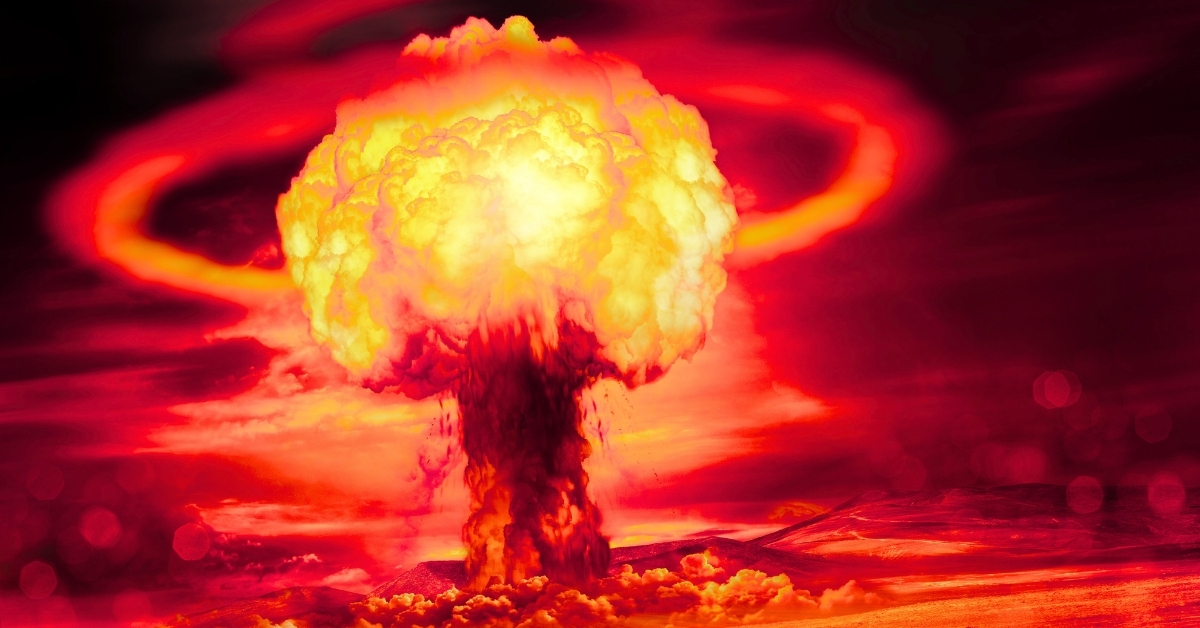
Explore the world’s deadliest bombs, from WWII’s Tallboy to the Soviet Tsar Bomba. Ranked by explosive yield with history, context, and shocking facts.
#10. “Tall Boy” – United Kingdom – 12,000 lb (bomb mass)
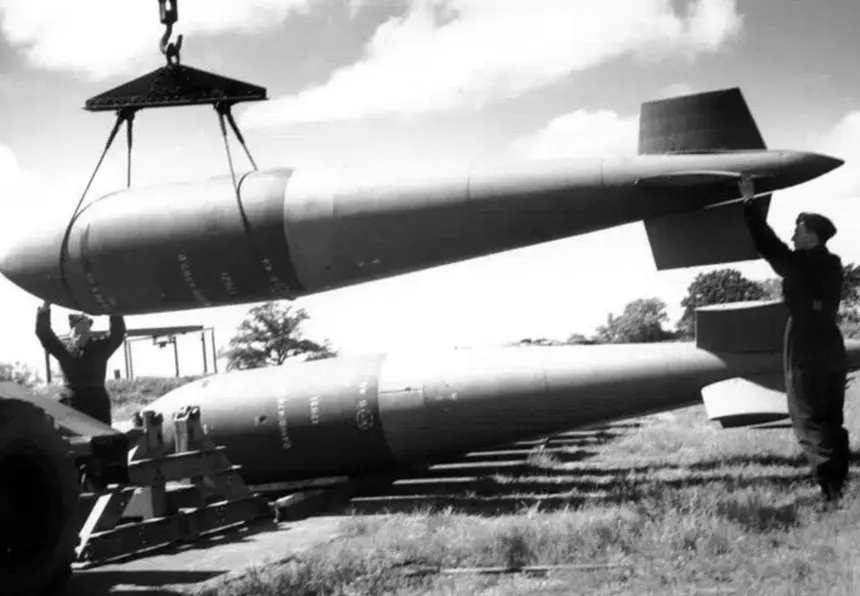
The Tallboy was an “earthquake” bomb designed by Barnes Wallis and produced for the RAF in 1943–45. Weighing about 12,000 lb and carrying a dense explosive filling (Torpex D1), the Tallboy was built with a very strong, streamlined casing so it could survive high-speed impact and penetrate deeply before detonating — sending shock through a structure’s foundations rather than relying on surface blast alone. It was used selectively against hardened, high-value targets (V-weapon sites, viaducts, tunnels, and notably the battleship Tirpitz), where precision deep-penetration effects were required.
#9. GBU-43/B / MOAB (“Massive Ordnance Air Blast” or “Mother of All Bombs”) – United States – ≈ 11 tons TNT equivalent (~0.011 kilotons)
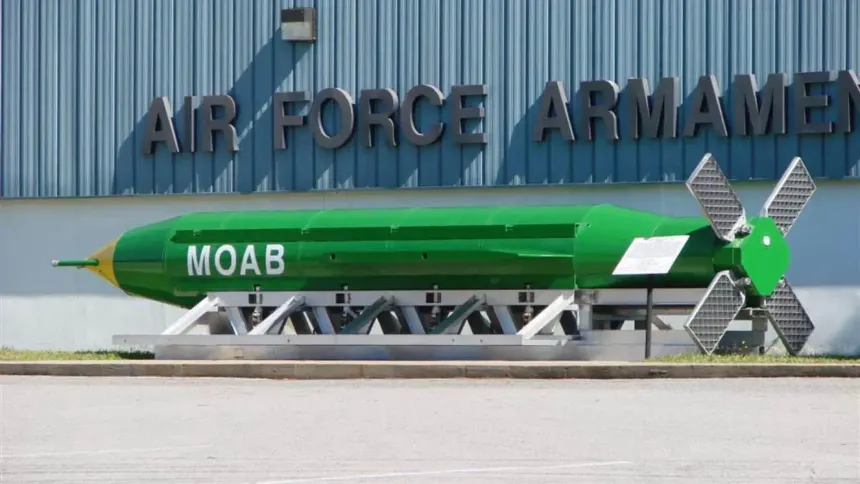
The MOAB is the largest non-nuclear bomb in the U.S. arsenal. Designed for maximum blast effect over surface/tunnel targets, it produces a massive explosion, but its yield is tiny compared to nuclear weapons. Its usage in Afghanistan in 2017 was intended more for psychological and tactical impact than for causing catastrophic scale comparable to nuclear bombs.
#8. FOAB (“Father of All Bombs” – Russia – Claimed ≈ 44 tons TNT equivalent (~0.044 kilotons)
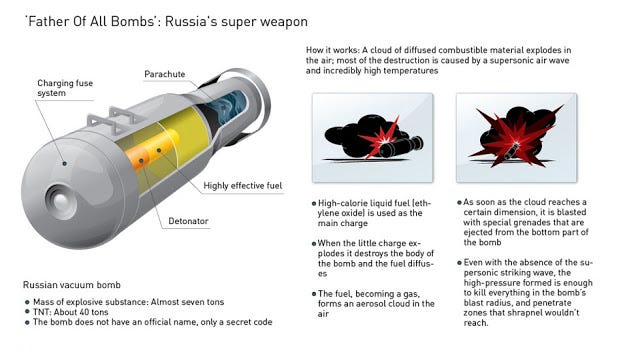
The FOAB is Russia’s large thermobaric bomb. Thermobaric weapons create a prolonged blast wave and high temperature by using atmospheric oxygen. Russia claims it is about four times more powerful than MOAB; however, independent verification of its yield and operational status is limited and sometimes disputed.
#7. “Little Boy” – United States – ≈ 15 kilotons
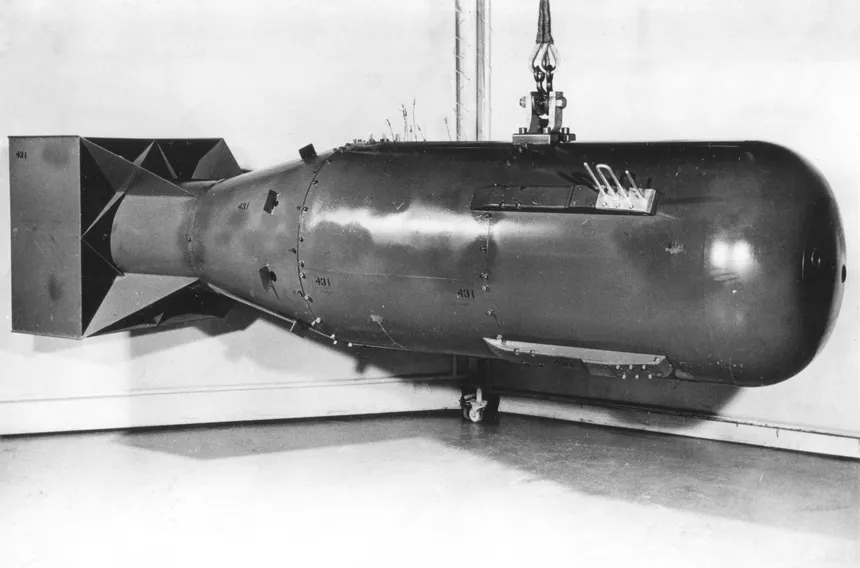
Little Boy was the first nuclear bomb ever used in warfare. It was a uranium gun-type nuclear weapon that detonated over Hiroshima near dawn in August 1945, causing immediate massive destruction, fires, and radiation injuries. Its design was simple but deadly, and it has become a defining moment in history both for its human cost and for its role in ending World War II.
#6. “Fat Man” – United States – ≈ 20-23 kilotons
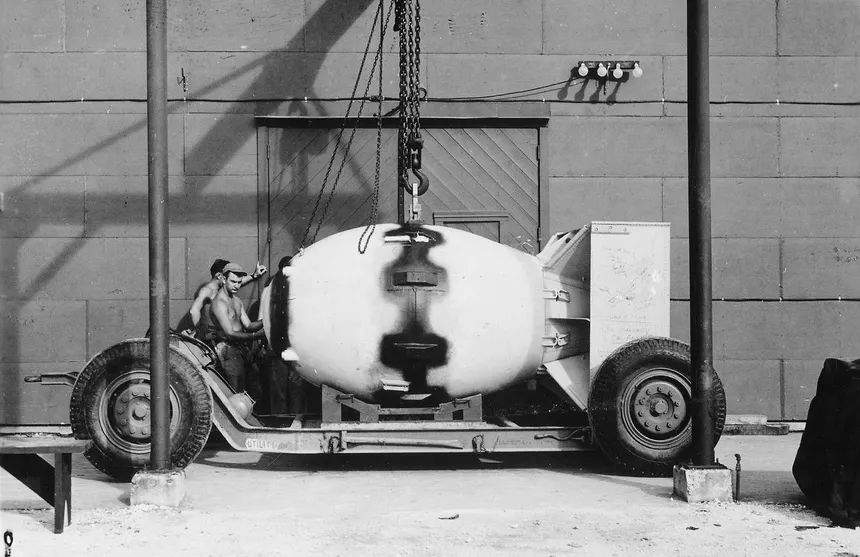
Fat Man was a plutonium implosion-type bomb (different technical design than Little Boy). Dropped on Nagasaki, its burst caused enormous destruction in a hilly, more industrial city, resulting in tens of thousands of immediate deaths and many more from radiation exposure. Its use alongside Little Boy marked the only time nuclear bombs have been used in active combat.
#5. “B-53” – United States – ≈ 9 megatons
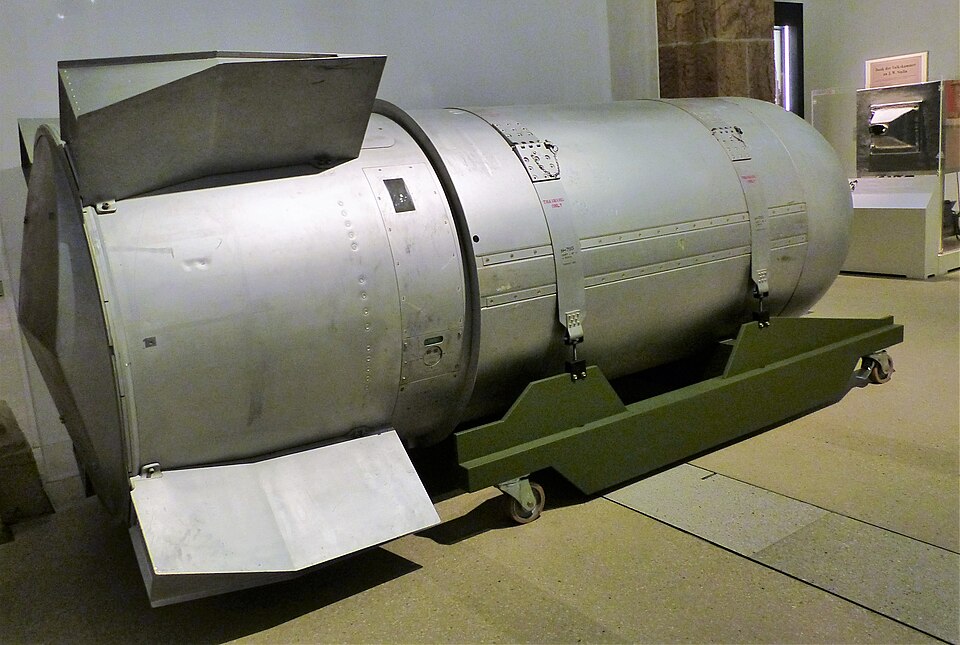
The B-53 was designed to destroy deeply buried hard targets (bunkers) and served as one of the U.S.’s last very high-yield gravity bombs. It entered service in the early 1960s and was retired in the 2010s. Though not used in war, its presence played into nuclear deterrence doctrine.
#4. “Ivy Mike” – United States – ≈ 10.4 megatons
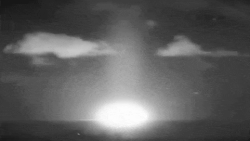
Ivy Mike was the first true thermonuclear (hydrogen) bomb test by the U.S., proving the Teller-Ulam design. It was not weaponized (too large, heavy, required cryogenic systems). The explosion vaporized Elugelab Island and created enormous fallout. It marked the beginning of the “H-bomb” era.
#3. “Castle Bravo” – United States – ≈ 15 megatons
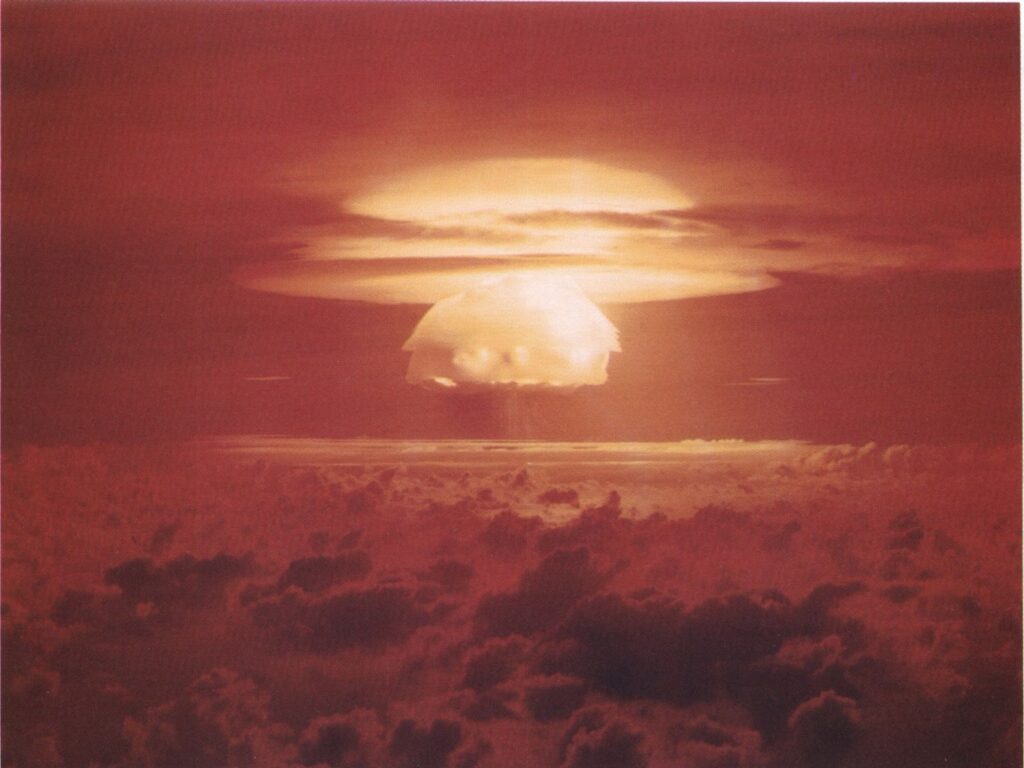
Castle Bravo was the largest U.S. nuclear test ever conducted. It used lithium-deuteride fusion fuel; design miscalculations (involving lithium-7) caused it to detonate with far higher yield than expected. The fallout contaminated nearby islands and exposed populations, leading to long-term health and diplomatic consequences.
#2. B-41 (“Mk-41”) – United States – ≈ 25 megatons
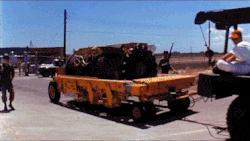
The B-41 (known also as Mk-41) was America’s most powerful bomb to ever be fielded. It was a three-stage thermonuclear weapon with both “dirty” (more fallout) and “clean” (less fallout) designs. Deployed on bombers during the early 1960s, it was eventually retired as missile and warhead technology advanced.
#1. Tsar Bomba (RDS-220 “Big Ivan” / “Vanya”) – Soviet Union – ≈ 50 megatons
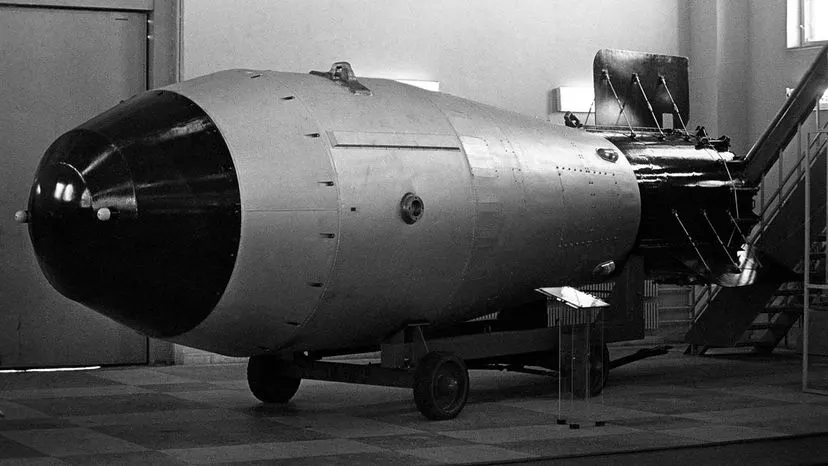
Tsar Bomba is the largest nuclear device ever detonated. Originally designed for ~100 Mt but scaled down (by switching part of the bomb’s tamper to lead) to 50 Mt to limit fallout and reduce risk to the drop plane. Its explosion remains one of humankind’s most extreme displays of destructive capacity.